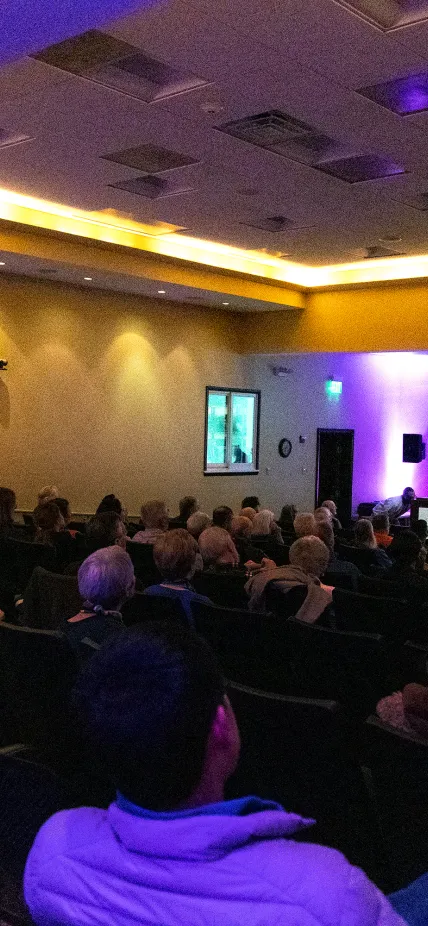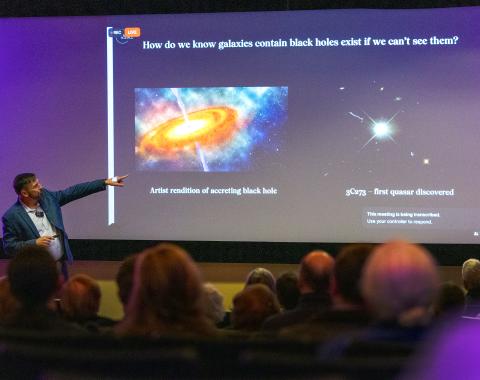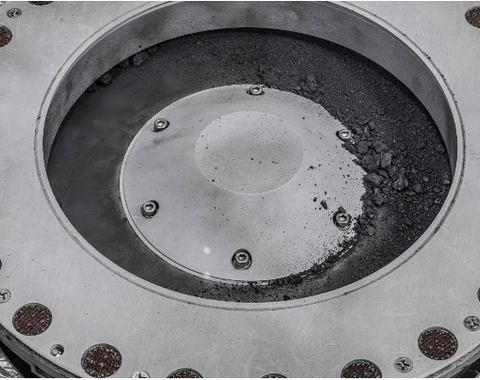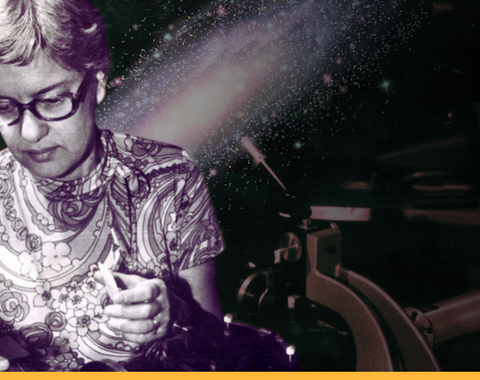In the first Neighborhood Lecture of 2025, Carnegie Science welcomed its 12th President, John Mulchaey, to its Broad Branch Road campus for a journey through 100 years of astrophysical breakthroughs.
The event marked the centennial of Carnegie astronomer Edwin Hubble’s revolutionary discovery—announced in Washington, D.C., in 1925—that a mysterious celestial smudge astronomers at the time were calling “spiral nebulae” actually represented an entirely separate galaxy beyond the boundaries of our own Milky Way. This finding, made possible by the powerful telescopes at Carnegie’s Mount Wilson Observatory, fundamentally altered our understanding of the cosmos.
We Recorded It For You!
Over the hour-long program, Mulchaey reflected on Hubble’s foundational work and traced the advances in astronomy over the past century. “In my mind, Edwin Hubble discovered the universe,” he said, emphasizing the magnitude of Hubble’s 1925 announcement, which revealed that the universe was vastly larger and more complex than previously imagined.
Mulchaey took the audience on a tour of the evolving cosmos, from the role of dark matter and supermassive black holes to the thousands of exoplanets discovered in the last three decades. “We now think there could be a trillion planets in our galaxy alone,” he noted. “Even if that estimate is off by a factor of ten, it’s still a huge number—and this is just one galaxy!”
Looking ahead, Mulchaey shared his optimism about next-generation observatories like the Vera Rubin Observatory, the Nancy Grace Roman Space Telescope, and the Carnegie-led Giant Magellan Telescope. These powerful tools, he explained, will allow astronomers to look deeper into space and further back in time than ever before.
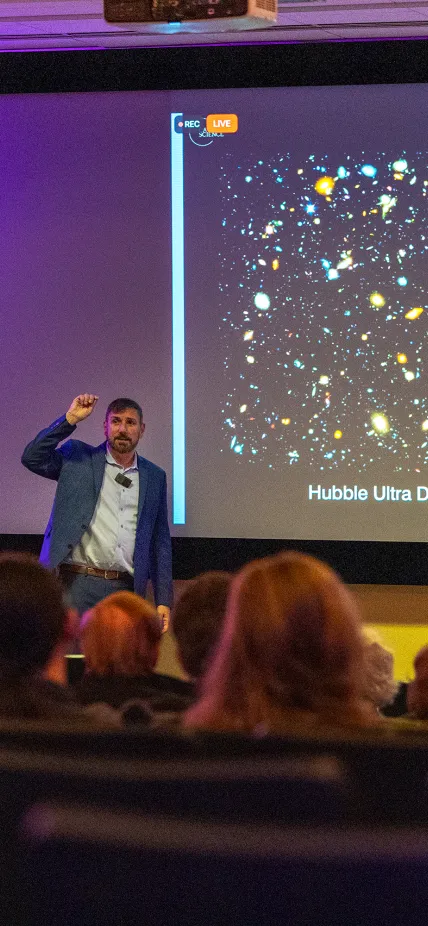
Mulchaey also stressed the importance of funding large-scale scientific infrastructure like the Giant Magellan.
“Unfortunately, the future of American astronomy really could be quite in the balance if these telescopes don’t get built,” he warned. “Basic research, which is what we do at Carnegie, is a great investment in the U.S. economy. For every dollar we spend, we make something like three dollars back.”
The evening began with a warm welcome from Michael Walter, Director of the Carnegie Science Earth and Planets Laboratory (EPL), who praised Mulchaey’s decades of leadership and dedication to scientific discovery and public engagement. The event concluded with a lively audience Q&A with topics that ranged from the use of AI in astronomy to the mysteries of dark energy and galaxy formation.
The Neighborhood Lecture Series, hosted by EPL at Carnegie’s Broad Branch Road campus in Washington, D.C., has brought world-class science to local audiences for over 15 years. This special lecture served not only as a celebration of a century of cosmic discovery but also as a compelling reminder of how much more there is to learn—and how essential it is to keep exploring.
“Every time we build a new telescope, the most interesting things it’ll discover are the things we have no idea about,” concluded Mulchaey. “The universe always has surprises for us.”
